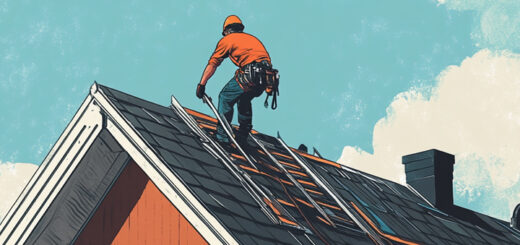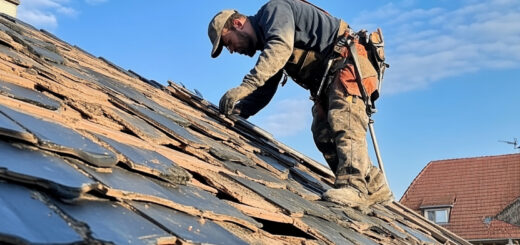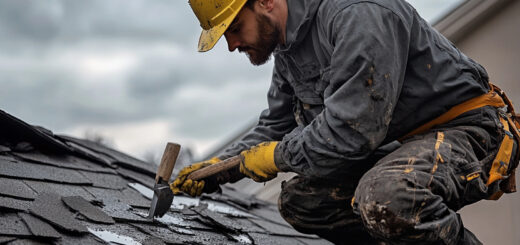The Complete Guide to Seasonal Roof Maintenance
Your roof is your home’s first line of defense against the elements, protecting you from rain, snow, wind, and sun. However, different seasons bring different challenges that can affect the durability and longevity of your roofing system. Without proper seasonal maintenance, minor problems can escalate into expensive repairs or even require premature roof replacement.
Regular roof maintenance helps ensure your home stays protected year-round, preventing leaks, improving energy efficiency, and extending the lifespan of your roof. Whether you are a homeowner or a property manager, understanding how to prepare your roof for each season is crucial. This guide will provide an in-depth look at seasonal roof maintenance, what to look out for, and steps you can take to keep your roof in excellent condition throughout the year.
Spring Roof Maintenance: Preparing for Storms and Heavy Rain
Spring is a critical time for roof maintenance as the weather begins to warm up and heavy rains become more frequent. The combination of moisture and leftover winter damage can compromise your roof’s structure if not addressed properly. Here’s how to prepare your roof for spring:
- Conduct a Thorough Roof Inspection
Winter storms, ice, and snow can leave hidden damage that may not be visible from the ground. As soon as the weather allows, inspect your roof for missing, cracked, or curling shingles, soft spots, or any structural damage. Pay close attention to roof valleys and flashing around chimneys, vents, and skylights, as these areas are prone to leaks. For a detailed guide on roof inspections, check out IKO’s Roofing Inspection Guide. - Clean Gutters and Downspouts
Winter can leave behind debris, which can clog gutters and downspouts. Blocked drainage systems can cause water to pool on your roof or near your foundation, leading to leaks or structural damage. Make sure all gutters are clean and securely attached. Consider installing gutter guards to minimize debris buildup throughout the year. For tips on keeping gutters clean, visit This Old House’s Gutter Maintenance Guide. - Check for Mold, Algae, or Moss Growth
Springtime warmth combined with moisture can create ideal conditions for mold, algae, and moss. These growths can trap moisture against your roof and cause premature deterioration. If you notice any, clean your roof with a mixture of water and mild detergent or use a professional roof cleaning service. GAF’s guide on algae-resistant shingles offers solutions to prevent future buildup. - Trim Overhanging Branches
Trees with overhanging branches can pose a risk to your roof, especially during spring storms. Trim branches away from your roof to prevent damage from falling limbs and to reduce debris accumulation. Additionally, keeping branches away from your roof minimizes the risk of pests gaining access to your attic. For proper tree-trimming techniques, refer to The Arbor Day Foundation’s Tree Pruning Guide. - Inspect Flashing and Sealants
Check metal flashing around vents, chimneys, and skylights for any signs of rust, gaps, or loose fittings. Sealants may have cracked or deteriorated over winter and should be reapplied as needed to prevent leaks. - Schedule a Professional Inspection
If you are unsure about the condition of your roof after winter, consider hiring a roofing professional to conduct a detailed inspection and make any necessary repairs. Addressing small issues now can prevent costly repairs later in the year. Angi’s guide to finding a reputable roofer can help you choose the right contractor.
Summer Roof Maintenance: Combatting Heat and UV Exposure
Summer can bring intense heat, humidity, and UV radiation, all of which can accelerate wear and tear on your roof. Proper maintenance can help your roof withstand summer’s harsh conditions.
- Inspect for Sun and Heat Damage
UV rays can cause asphalt shingles to become brittle and fade over time. Check for cracking, warping, or blistering, which may indicate heat damage. Metal roofs, while more resistant to UV exposure, should also be inspected for expansion-related stress. Learn more about UV damage from Owens Corning’s Roofing Durability Guide. - Ensure Proper Ventilation
A poorly ventilated attic can lead to heat buildup, which increases your home’s cooling costs and shortens your roof’s lifespan. Ensure that attic vents are free from obstructions to allow proper airflow. Proper ventilation prevents excessive moisture buildup, reducing the risk of mold and mildew. For a deeper understanding, visit Energy.gov’s Attic Ventilation Guide. - Check for Signs of Pest Infestation
Hot weather can drive pests such as birds, squirrels, or insects to seek shelter in roofing materials. Look for signs of nesting or damage to shingles and soffits. If you spot any signs of infestation, consider hiring a pest control specialist. - Reinforce Roof Coatings and Sealants
If your roof has a protective coating, such as a cool roof coating, check for wear and reapply as necessary to improve energy efficiency and extend the lifespan of your roof. - Prepare for Summer Storms
Heavy thunderstorms, hail, and high winds can strike in summer. Secure loose shingles and check that your drainage system is working properly to prevent water damage. Learn how to storm-proof your roof from The Insurance Institute for Business & Home Safety. - Conduct a Post-Storm Inspection
After a major summer storm, inspect your roof for damage caused by flying debris or hail. Prompt repairs can prevent minor issues from escalating.
Year-Round Roof Maintenance Tips
Taking a proactive approach to seasonal roof maintenance ensures that your roof remains in excellent condition year-round. Whether preparing for summer’s heat, fall’s rain, winter’s snow, or spring’s storms, these maintenance steps will help protect your home, improve efficiency, and extend your roof’s lifespan.
For more information and expert insights, consider visiting authoritative sources such as:
- National Roofing Contractors Association (NRCA)
- HomeAdvisor’s Roofing Repair Cost Guide
- Consumer Reports Roofing Buying Guide
By staying ahead of seasonal maintenance, homeowners can save money, prevent costly repairs, and ensure their roof remains strong and secure for years to come.












